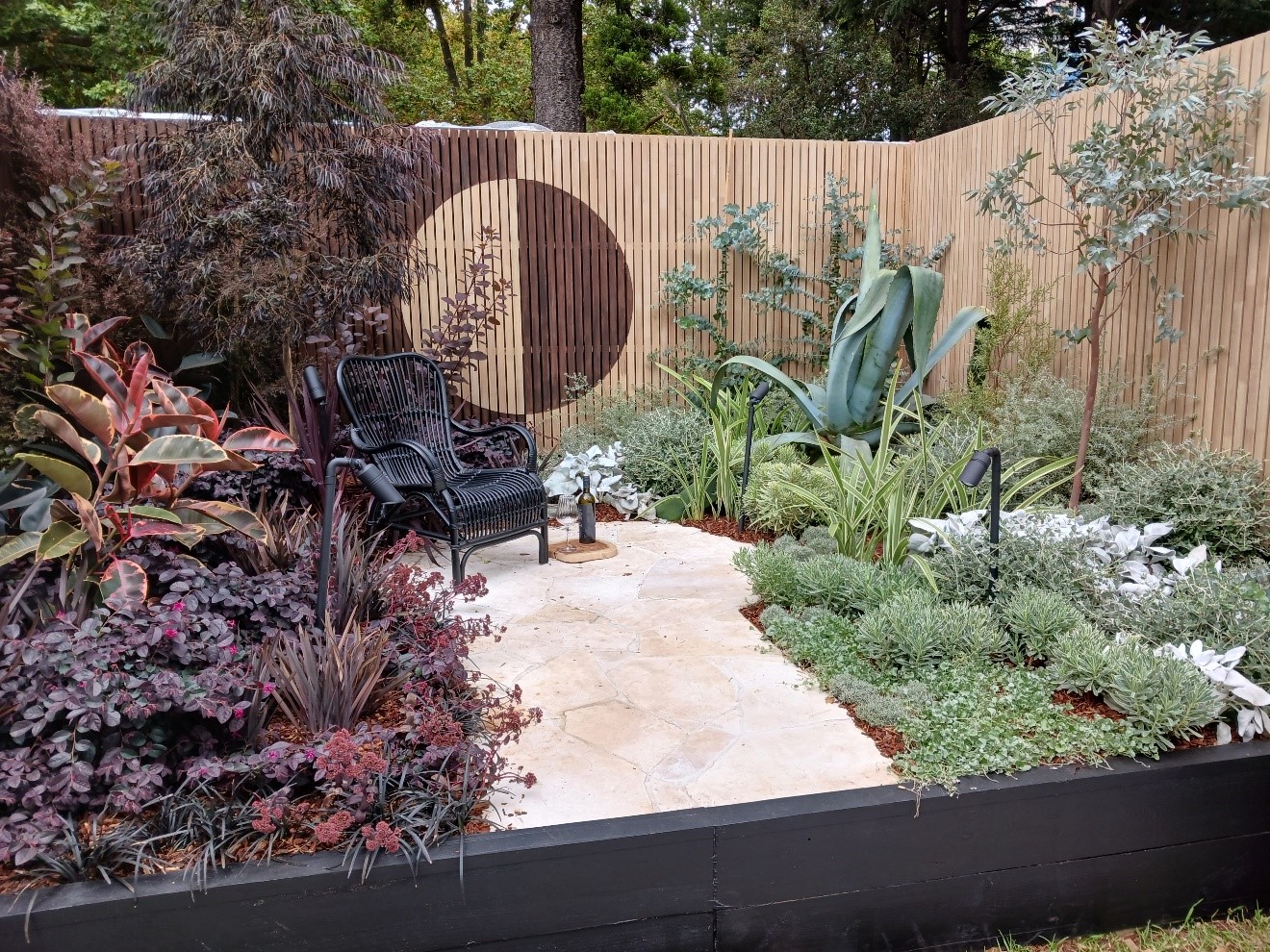Landscape design courses at ARO College can fulfil many people’s dreams of having a lush garden. This is achievable even within the limited outdoor spaces of Australian cities’ villas, townhouses, and duplex homes.
Let’s explore the key steps taught in our landscape design courses on how to transform your small space into a lush garden, tackling common challenges with smart and practical strategies:
- Addressing the Dilemma of Small Land Size
The primary obstacle garden enthusiasts face in villas, townhouses, or duplex settings is the constraint of small land size. However, this limitation shouldn’t deter a horticulturist from pursuing gardening aspirations. Instead, view it as an opportunity to exercise creativity and maximize the potential of an outdoor space. - Creating a Simple Landscape Plan
Begin by envisioning how you want to utilize the garden space. Incorporate elements such as plants, social areas, places for children and pets, and a grassed area that can be easily maintained with a small electric mower. Incorporate designated social areas where owners can relax and entertain guests. Whether it’s a cozy seating nook, a dining space for outdoor meals, or a fire pit for gathering around on cool evenings, ensure that the garden offers inviting spaces for socializing and unwinding. You might need to consider children and pets. Designate a safe play area equipped with durable materials and age-appropriate toys. Consider adding features such as a sandbox, a playhouse, or a pet-friendly garden zone to keep little ones and furry friends entertained. Lastly, include a grassed area where people can enjoy the sensation of soft green grass underfoot. Choose a grass variety that is suitable for the climate and can be easily mown with a small electric mower to keep it looking neat. - Choosing Suitable Plants
When selecting plants, opt for small to medium-sized species that won’t overwhelm the space but will still provide visual interest. Consider including Gardenias, Camellias, Calliandras (commonly known as ‘Red or pink powder puff’), and Loropetalums in the garden. To avoid a patchy appearance, plant species in groups of three or more allowing them to blend harmoniously and create a cohesive look. In addition to these suggestions, consider incorporating flowering plants like Perennial Salvia and dwarf shrubs like Kurume Azaleas. These plants will add visual interest to the garden without overwhelming the space. - Rejecting Unsuitable Plants
Avoid planting large species that can dominate areas or encroach on boundary lines or fences, causing potential disagreement with neighbours. Species such as Eucalypts, Lilly Pilly’s (Syzygium species), ‘Blueberry Ash’, and even large Azaleas and that widespread hedging plant Murraya Paniculata, should best be avoided due to their size and potential for causing disturbances. Naturally, bamboo, tall palms that will drop their ‘branches’, bougainvillea, and other ‘climbers’ are also best avoided. - Aiming for Simple Maintenance
Maintaining a small garden in a villa, townhouse, or duplex home shouldn’t be a daunting task. Aim for simplicity by selecting low-maintenance plants and incorporating ‘smart’ design features. Regular watering, weeding, and occasional pruning are essential tasks to keep the garden looking its best. Mulching can help retain moisture, suppress weeds, and improve soil health, reducing the need for frequent watering and maintenance. Encourage natural pest control by attracting beneficial insects and birds to the garden with the suggested flowering plants and by adding a raised ‘bird bath’ (to foil the local cats).
By following these guidelines and embracing the challenges and opportunities presented by small-space gardening, you can create a stunning garden oasis that enhances a villa, townhouse, or duplex. With a little creativity and care, even the smallest of outdoor spaces can be transformed into a thriving garden retreat.
Learn how to design beautiful outdoor spaces through our AHC50621 Diploma of Landscape Design, how to build them through our AHC52021 Diploma of Landscape Construction Management, or how to plant them through our AHC50422 Diploma of Horticulture Management.

